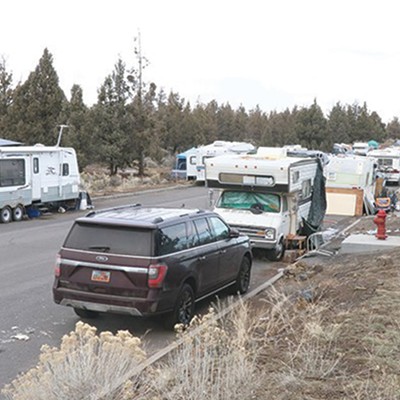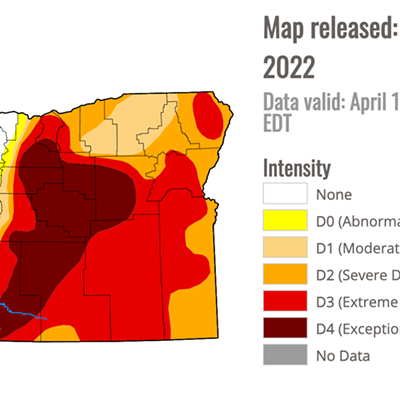"Kids are like hummingbirds. They breathe a lot," said Dr. Paul Lewis at a recent Oregon Senate committee hearing on Environment and Natural Resources. "Their lungs are small and a lot more of this stuff gets in there...when exposed early in life, there are a lot more decades for those changes to your cells to occur that can lead to cancer." Lewis made that statement in light of the fact that every day, Oregon school children are inhaling cancer-causing pollutants stemming from dirty diesel engines.
Apart from the carcinogen risks, numerous health studies show elevated risks of asthma and absenteeism. The good news, however, is that federal regulations were tightened in 2007, with new diesel engines running up to 95 percent cleaner. But with diesel engines known to run for millions of miles, where do Central Oregon buses stand?
"Slowly and steadily, we're working towards eliminating older diesel school buses by 2025," says Kim Crabtree, director of transportation for Bend-La Pine Schools. "Out of 136 school buses, we have 65 left to replace." The district has replaced more than half of its fleet with cleaner-burning propane engines. "The challenge is that in some areas propane is still difficult to obtain, you need special training... plus it just doesn't get the mileage that diesel gets."
Kevin Downing, who has been the Clean Diesel Program coordinator for the Oregon Department of Environmental Quality for 16 years, says Bend-La Pine faces unique challenges. "You need to look at the size of the district and how far the routes are," he says. "Portland for example, is in a dense area, but Bend-La Pine is a bit different. (It) depends upon their needs. So perhaps a solution lays in a mix of choices....new diesel, propane and even electric engines."
Jennifer Coleman, health communications and outreach director for the Oregon Environmental Council, chaired a 2016 Dirt on Diesel Report that examined the public health and economic effects of the issue. "The big problem is that existing engines are putting out pollution that is a really big significant public health problem," she says. "The problem we have is dealing with engines created before 2007 which can run for a million miles with decades of use." With California enforcing stricter emission standards and Washington implementing incentives, more of these dirty diesel engines are ending up in Oregon. Coleman states, "In reality, it's a lot of work. It's just a few engines at a time. What we really need is standards for these engines."
A standard may come with Oregon Senate Bill 1008, which would address diesel pollution and essentially clean up most school buses in Oregon. In addition, approximately $73 million worth of funding will come to Oregon from a settlement with Volkswagen, stemming from allegations that the company installed "cheat devices" in its diesel engines in order to pass emissions tests.
"It's an unprecedented opportunity," says Coleman. "If we design it right, and pair the incentive money with a really strong program, it's a great way to springboard us into retiring these engines."
Downing, who helped design the Oregon Clean Diesel Initiative, says: "I think there's a realistic issue of availability of money, of funding to support the change." With the federal government zeroing out the funding for the Clean Diesel program, and with no state funding, Downing acknowledges the challenges. The Environmental Protection Agency, facing large budgetary cuts, has funded $7 million toward the program thus far. "When we began the program, we set a goal of reducing the cancer risk from breathing exhaust to less than one in a million in 2017 — which is a public health benchmark for protecting the public from cancer risk," Downing says. He estimates that to meet this goal, Oregon needs to reduce 1,400 tons of diesel particulate. "So far, we've reduced 15 tons — about one percent of our goal."
Still, he remains optimistic, noting that the program has received wide bipartisan support in congress. "Both Republicans and Democrats from all ideological stripes really support the diesel reduction program, because it's so cost effective," he says, noting the $1.2 million dollars in savings per year in avoided health and environmental costs. "Whether or not that support is strong enough to put money into the budget remains to be seen."
Meanwhile, Crabtree estimates a cost of about $125,000 for a new diesel or propane bus. With eight more years until the 2025 deadline, the school board would need to replace approximately eight school buses per year, at a cost of approximately $1 million per year.
"School buses are the safest way to get kids to school," Downing says, "and so what we're trying to do, and what Bend-La Pine school district is trying to do is trying to make it the healthiest way to get kids to school."


























